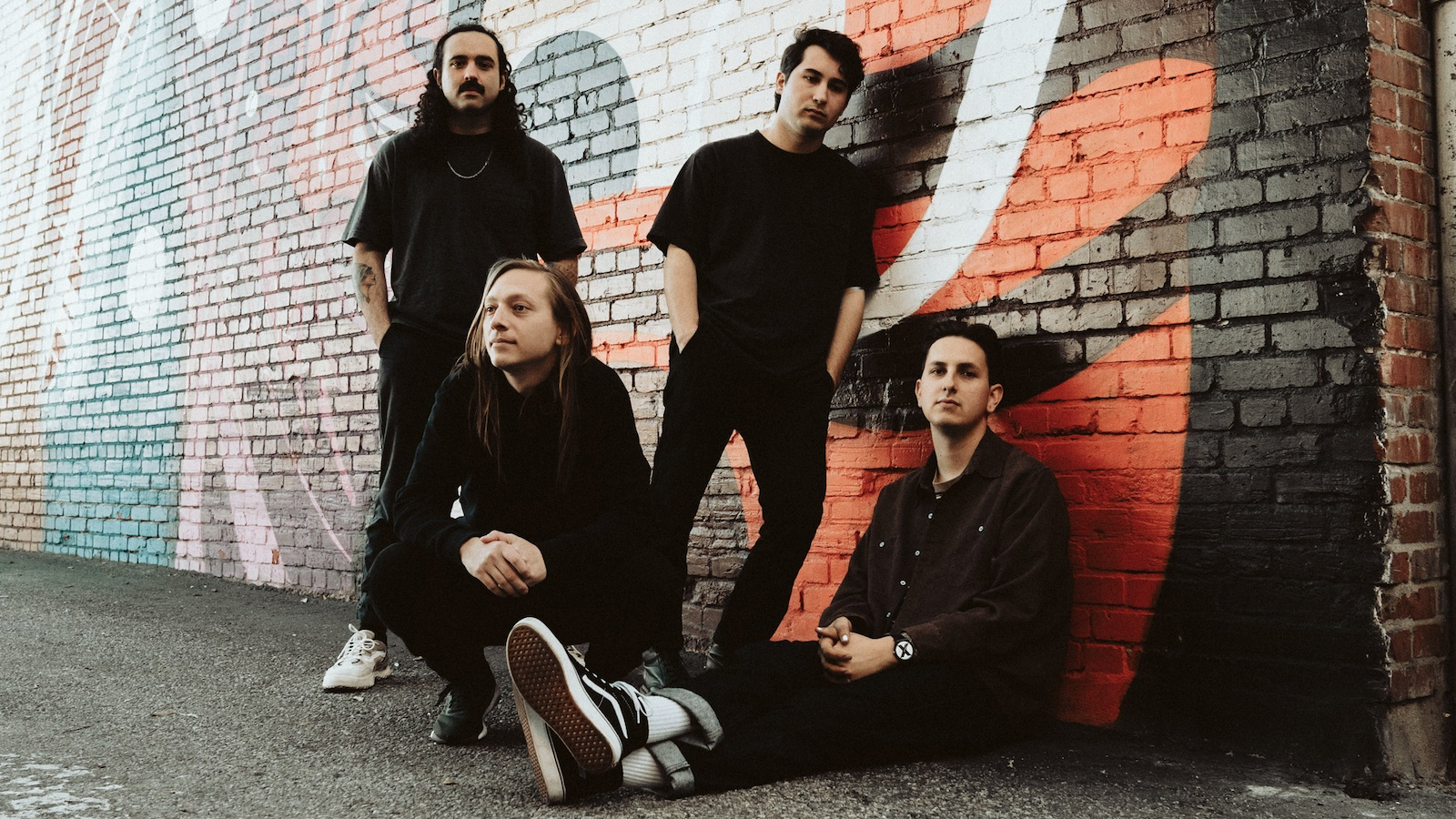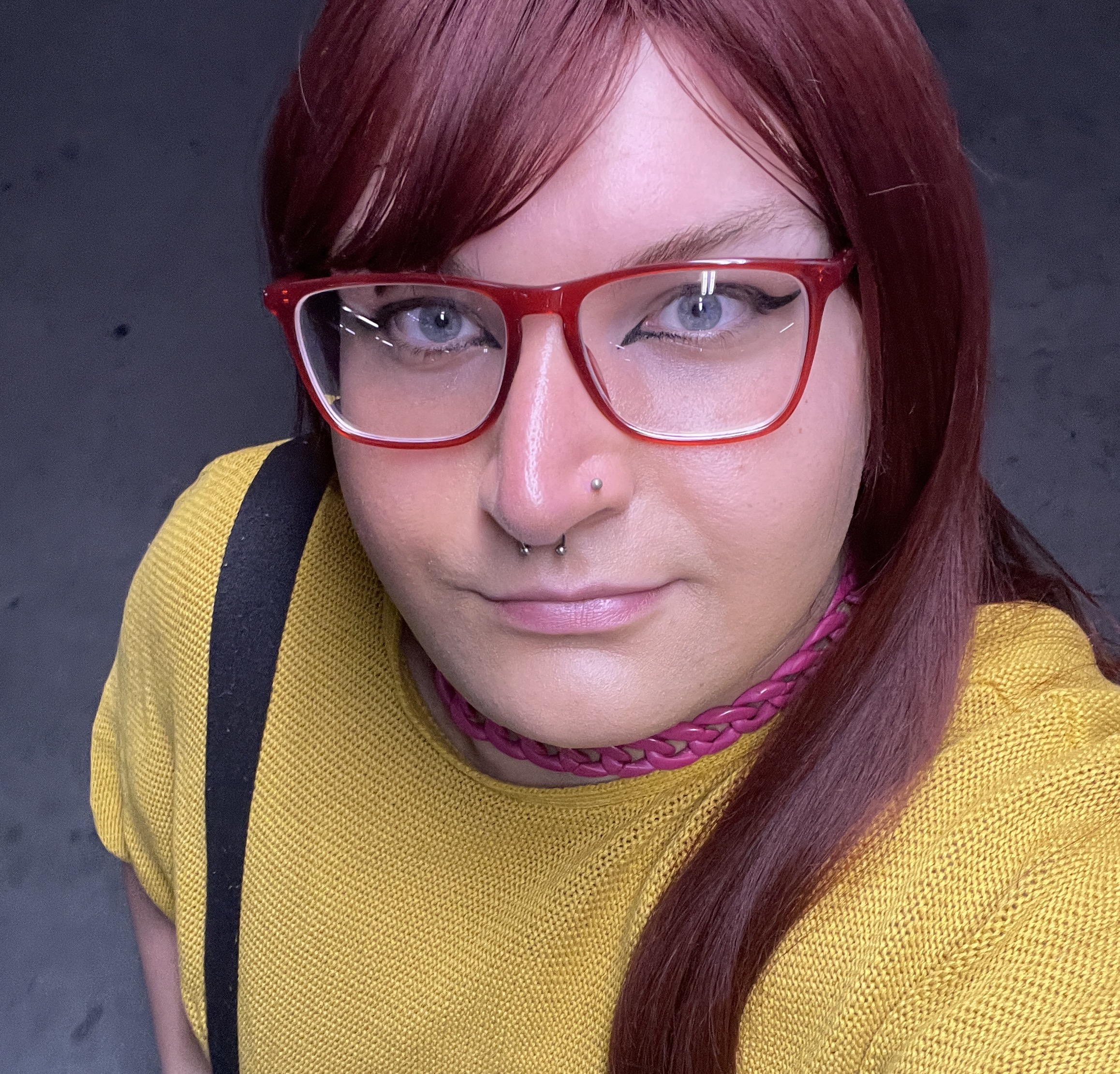Movements: “I really put my heart into the guitar parts for this band, and I hope it comes across that way”
Exploring how a great emo record comes to life with one of the genre's best new acts in decades

Ever listened to a record and thought, “Hmm, y’know what would make this so much better? If it made me feel like pounding my head through my bedroom wall!”? If so, good – Movements are here for you. Their powerfully poignant emo-punk is so visceral and intense that it should come with a warning label separate to the standard ‘explicit lyrics’ tag. “Parental Advisory: This Shit Will Make You Feel Things You Didn’t Even Know You Could Feel”.
It’s part and parcel to the Cali quartet’s charm: their 2017 debut is titled Feel Something, after all. And it came after a whirlwind stint of trailblazing their contemporaries would’ve undoubtedly been jealous of – they formed in 2015, played a single show at their local, and promptly signed a three-LP deal with Fearless Records. The middle kid in that contract is No Good Left To Give, which ups the ante its predecessor set with even more gut-punching lyrics, bolder hooks and guitar parts that steal the show on almost every track.
When Australian Guitar got down to business with axeman Ira George, we were unsurprised to learn that with LP2, Movements set out with one clear goal in mind: to make an album so big, brash and booming that it made Feel Something look like Fisher Price’s My First Emo Record.
How did you go about toeing that line between light and dark with your playing?
We took a really different approach to this record. We just wanted to go all-out with it. I’m the only guitar player in the band, and in the past, we’d always tried to hide the extra guitars in the mix. But with this record, I was like, “Man, I just want to write whatever the f*** I want.” I wanted it to sound the best it possibly could, and didn’t really care about whether that meant adding a bunch of extra parts. And I think that was really instrumental in making this record sound the way it does. We used, like, five or six different amps for the whole record, and about thirty different pedals. On every single double, for each track, we would use a different amp or a different guitar – we just tried to be as different as possible for every single tone on every single track. And I think it really paid off.
A few years ago, you told Music Radar that your secret weapon was the JHS Panther Cub analog delay. Is that still the case in 2020?
It is! I used that so much on this record. We just kind of added things to elevate that as well – I don’t know if you’ve ever heard of this company called Old Blood Noise Endeavors, but I used a tonne of their pedals; they have some really unique stuff. It was crazy, dude, we just went all-out. If we were recording the rhythm part for the verse of a song, we would change the amps, pedals and guitar for the double on it, just because we could. We were like, “Fuck it. We have the time.” We only had three weeks to make the last record, but for this one we had a little over five weeks, so we were able to spend a lot more time on the little things.
What made you want to spend so much extra time making this record?
I don’t think any of us were really expecting Feel Something to be as successful as it was. So there was a lot of hype going into this record, and we spent the better portion of two years writing the initial songs for it – we wanted to make sure that we had enough time to do everything that we needed to in the studio. Feel Something felt a little bit rushed, and we just didn’t want to feel that way at all for this record – we just wanted to do everything we possibly could. We still felt a little rushed in certain ways because I mean, the amount of possibilities in the studio are just endless – we ended up having five or six songs that we just didn’t record. We ended up focusing more on quality over quantity.
Was it gratifying to have that kind of freedom as a songwriter?
I don’t know if you know, but I joined the band right around the time our EP Outgrown Things was coming out – that was something I wasn’t actually a part of. So going into a record like Feel Something, I was mostly just trying to emulate and elevate what Movements already was, because I just felt like that was the right thing to do as the new kid. And that turned out great, but after that, I was kind of just like, “Well, I’ve done that. Now I’m just going to write whatever the f*** I want.” And I think that turned out for the best.
Get The Pick Newsletter
All the latest guitar news, interviews, lessons, reviews, deals and more, direct to your inbox!
Do you find that you’re able to use the guitar as a tool to create emotions of its own, not just in tandem with Pat’s vocals?
Oh man, totally. The way that I see it – and it’s so hard to explain, but when I’m writing on the guitar, I see it in the same way that Patrick sees his lyrics when he’s writing for his vocals. I’m trying to create a mood and a vibe, and this feeling of… Well, feeling something. Because the way we write our songs in Movements is that we always write the music first, so I’m always hearing these songs without vocals on them first, thousands and thousands of times before Patrick even touches them – so I definitely get those feelings without having the vocals on them. I really put my heart into the guitar parts for this band, and I hope it comes across that way.
There’s something about that really tasteful blend of reverb and delay over a minor chord that just screams, “I am sad, come be sad with me.” It’s like an emo calling card.
For sure. And I think that’s just in my blood, y’know? It’s so cool when you hear these songs for so long without vocals on them, and then we hand them off to Patrick and he kind of does his thing with them, and then we’re able to hear them after that like it’s a brand new song. It’s a very rewarding process.
As far as the guitars themselves go, do you remember what you were jamming out on in the studio?
I’m kind of insane about that – I wrote down every single thing that I used for every single track that we did. I’m eventually going to do something with all of that – I don’t know what that’s going to be yet, but I figured it would be cool to have. But I use a lot of Fender amps – I used a ’65 Twin, a ’59 Twin, and a ’68 Princeton – those were the three amps that I used for everything on the record, and we just kept switching back and forth between those three amps specifically.
Did you have a favourite piece of kit?
Will [Yip, producer] has so many guitars, man. I brought one of my own guitars with me, and we were like, “Okay, we’re going to use this for the main parts, but let’s also pick out another seven or eight guitars that we can use for the rest of the record.” He knows his shit way better than I do, so I was just like, “Cool, yeah, pick ‘em out!” We wound up using this American Vintage Strat – it was such a beautiful guitar, it had clay inlays and a mint green pickguard… It was so beautiful. And we used that a lot – I want that guitar now! It’s not something that Fender just sells anymore, so I’m on the hunt for a used one.
What is it about that Strat that just made your heart skip a beat?
I think because it was just so different to all the other guitars we had. It was always that guitar that we would go back to. We’d try every guitar out for a certain part, and nothing would work, but then we’d pick up that Strat and it would just twinkle. It was very bright – not tinny, but very twangy, in like, the most perfect way. It just kind of blended everything together. We used it a lot for leads and a lot of the accented parts – everything we had any issues with trying to find the right tones for.

Ellie Robinson is an Australian writer, editor and dog enthusiast with a keen ear for pop-rock and a keen tongue for actual Pop Rocks. Her bylines include music rag staples like NME, BLUNT, Mixdown and, of course, Australian Guitar (where she also serves as Editor-at-Large), but also less expected fare like TV Soap and Snowboarding Australia. Her go-to guitar is a Fender Player Tele, which, controversially, she only picked up after she'd joined the team at Australian Guitar. Before then, Ellie was a keyboardist – thankfully, the AG crew helped her see the light…
Weezer’s first show was opening for Keanu Reeves’ band Dogstar. Now the John Wick star is set to play a villain in the Buddy Holly hitmakers’ forthcoming mockumentary
“Even the thought that Clapton might have seen a few seconds of my video feels surreal. But I’m truly honored”: Eric Clapton names Japanese neo-soul guitarist as one to watch










